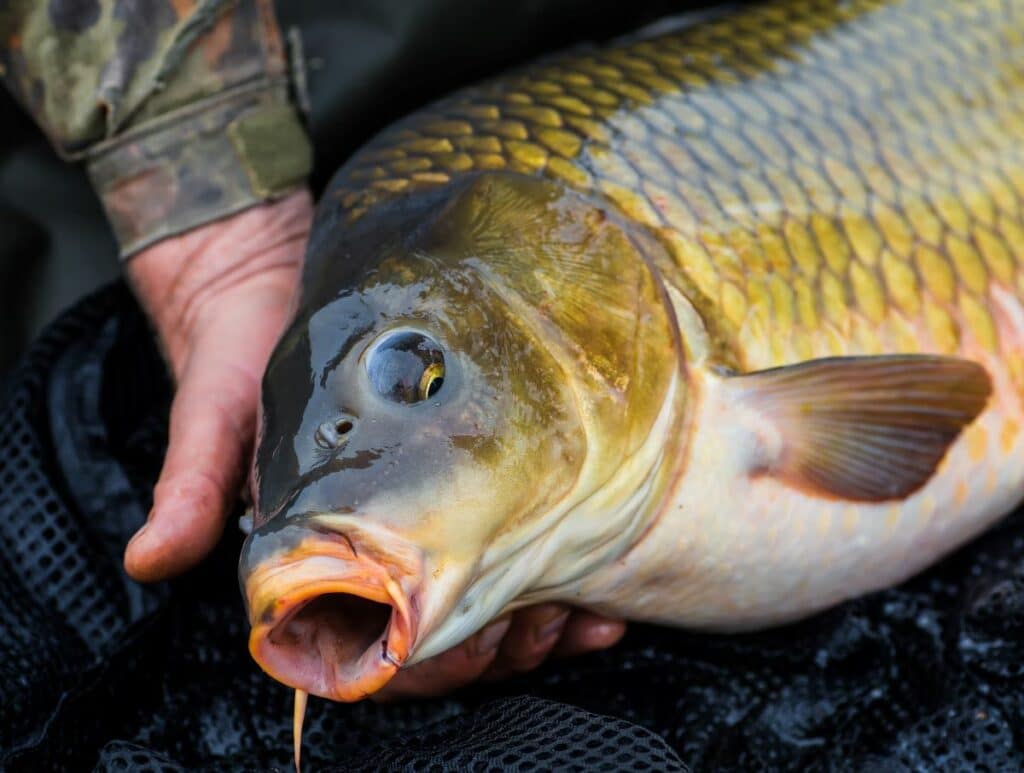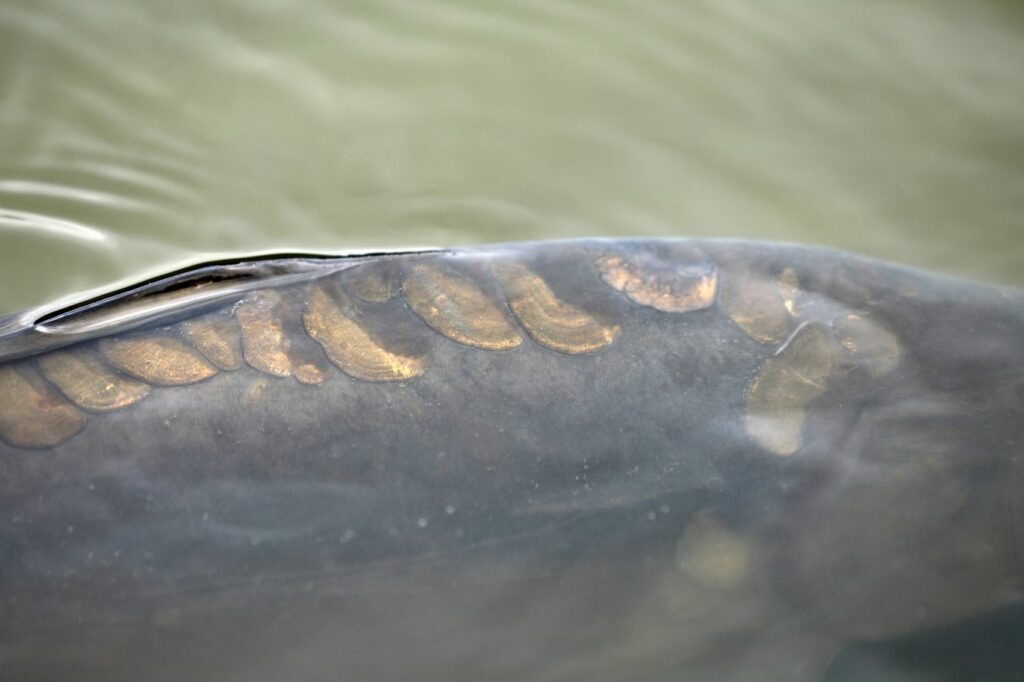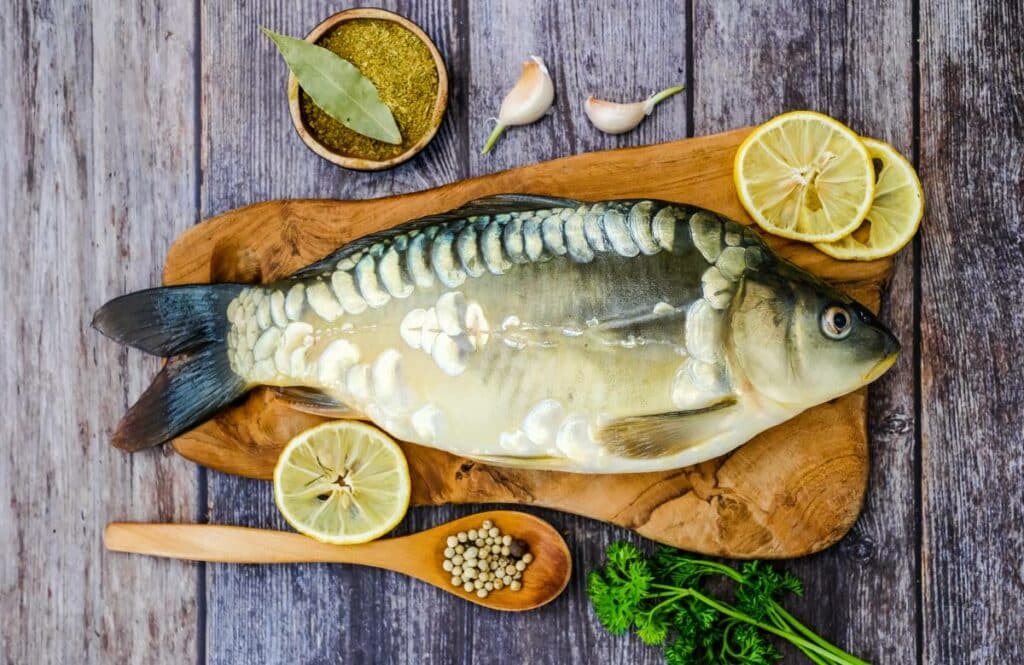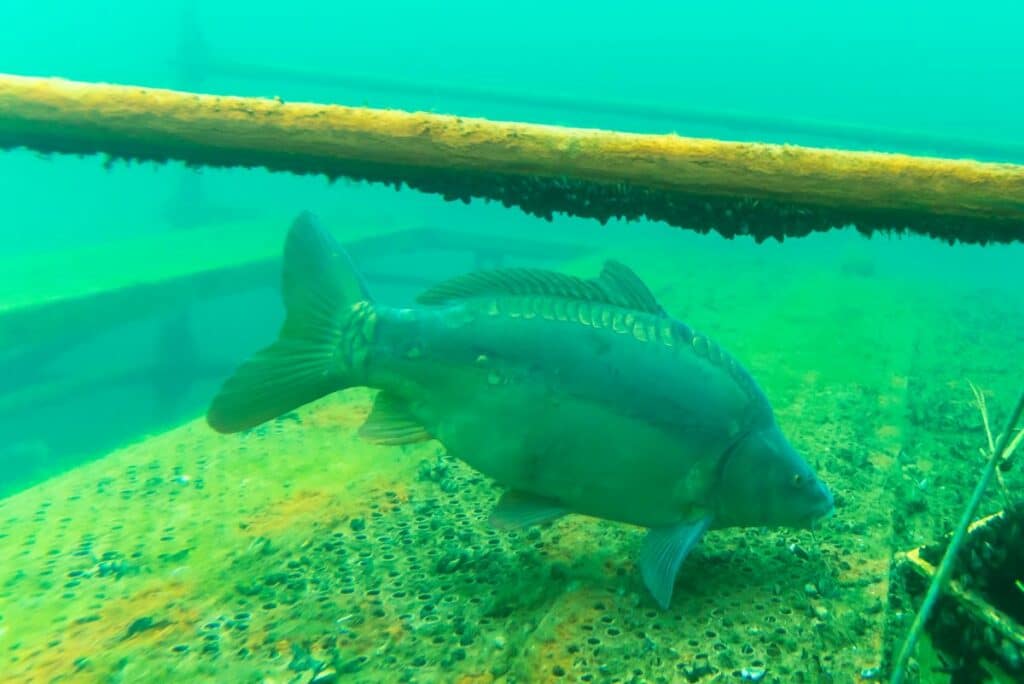the essentials in brief
Their irregularly arranged, iridescent scales make the fish extraordinarily beautiful. Read more about her looks here.
Mirror carp are omnivores and quite uncomplicated in their feeding behavior. You can find out more about aquarium keeping here.
The two types of carp differ in scale shape, diet and body shape. You can read more about the mirror carp as a food fish here.
Mirror carp with theirs unique scale pattern have a long history in the waters around the globe. In this article, we explain their habitat to you, explore their special characteristics and their importance for humans. We also give you tips for keeping the large fish species in the aquarium.
Mirror carp - artists of the underwater world

Mirror carp (Cyprinus carpio) are a special one Form of the common carp species, which is characterized by its unmistakable scale pattern.
They have an interesting appearance that sets them apart from other carp species. Their scales are not evenly distributed over the body, but show a irregular arrangement. This creates wonderful "mirrors" on their skin, which give them their name.
key fact box
The "mirrors" can come in different sizes and shapes and give the fish an individual appearance. Depending on the genetic makeup of a fish, the mirror paintings are more or less pronounced.
In addition to the characteristic scale pattern, mirror carp have one elongated physique, which makes them excellent swimmers. They are hardy fish that can reach up to a meter in length depending on environmental conditions and how they are kept.
Mirror carp are popular because of their unique external characteristics Fish lovers and aquarium enthusiasts Popular. The individual mirror paintings make each mirror carp a unique specimen. In ponds or lakes, mirror carp can make an impressive and soothing spectacle as they glide calmly through the water in a group.
In addition, mirror carp are robust and adaptable fish. They can tolerate a wide range of water conditions and are able to adapt well to different environments. This makes them suitable candidates for keeping in aquariums and ponds.
The habitat of mirror carp
are mirror carp widespread and are found in various bodies of water around the world. Originally from Asia and Europe, they have been introduced to many other countries due to their popularity as food fish and their ability to adapt to different habitats.
In Ihrer original homeland in Asia Mirror carp live in a variety of bodies of water including rivers, lakes, ponds, swamps and even paddy fields.
you are adapted to different water conditions and can thrive in both still and slow-moving water bodies. In countries like China, Japan, Korea and Vietnam, mirror carp have been part of the culture and diet for centuries.
Additional information: Mirror carp are also widespread in Europe and can be found in almost all countries. They were introduced to Europe many centuries ago and have since become native to many water bodies.

They find suitable habitats in lakes, rivers, canals and ponds. Often they are targeted in fish ponds and fish farms bred to be used as food fish.
Due to their adaptability, mirror carp have been introduced to many other countries and continents including North and South America, Africa, Australia and Oceania. They often became conscious to improve fishing or introduced as a food fish.
Unfortunately mirror carp have become too common in some of these areas invasive species developed that can affect the ecosystem as they can multiply rapidly and alter natural habitats.
Mirror carp are on different climatic conditions adjusted. However, they prefer warmer waters and can thrive well in temperatures of around 20 to 30 degrees Celsius. Sufficient oxygen, a balanced food base and good water quality are important for their survival.
In natural waters, mirror carp feed mainly on algae, aquatic plants, small crustaceans and insect larvae. In fish farms or aquaculture, they are often used special carp food fed to meet their nutritional needs.
The adaptability of mirror carp has resulted in them being able to thrive in a variety of waters around the world.
attitude in the aquarium?
The question of whether mirror carp are suitable for keeping in an aquarium requires a differentiated approach. Basically, mirror carp can in a very large aquarium be kept, which offers sufficient space and ensures good water conditions. They prefer calm and oxygen-rich waters.
Here are some factors to consider:
- size of the aquarium: Since mirror carp can grow relatively large, they need a lot of space to swim. A pond with a capacity of at least 2.000 liters is recommended to allow for their natural movement patterns.
- water quality: Like all fish, mirror carp depend on good water quality. An efficient filtration system and regular water changes are important to keep water conditions stable.
- social behavior: Mirror carp are social animals in nature and do well in groups. It is therefore advisable to keep several mirror carp together. However, care should be taken to ensure that the body of water offers enough space for all fish.
- Feed: Mirror carp are omnivores and eat both plant and animal food. A varied diet with special carp food, vegetables and live or frozen foods is important to ensure their health.
- temperature and environmental conditions: Mirror carp are used to different temperatures, but it is important to note the appropriate temperature for each species. Some species prefer warmer waters, while others thrive in cooler waters.
It is important to emphasize that keeping mirror carp in the aquarium is a commitment that requires careful planning and care. Aquarists should be fully aware of the needs of these fascinating fish inform them before deciding to keep them.
Mirror carp as food fish

key fact box
When considering mirror carp as a food fish, it is important to do research on where it came from and how it was raised to ensure the fish are healthy and safe for consumption.
Mirror carp also serve as food fish. In fact, in many parts of the world, carp are one popular food. They have been cultivated and consumed for centuries, especially in Asian and European countries.
Carp, including mirror carp, are targeted in some regions grown in ponds or lakesto use them as a food source. They are considered tasty and nutritious meat rich in proteins.
Especially in the traditional cuisine of some countries, dishes with carp are a staple part of many feasts and celebrations. Cooking methods vary by country and culture, but fried, grilled, or boiled carp are some of the common ways to cook them.
However, it is important to note that the use of mirror carp or any other species of carp as food fish should take into account ethical, cultural and environmental concerns. Sustainable fishing and aquaculture are of great importance to conserve stocks and Environmental impact to minimize.
Note: Not all mirror carp in ponds or aquariums are suitable as food fish, as they are often kept under controlled conditions and may have been given medication or food additives that make them unfit for human consumption.
Dazzling aquarium beauties
The fascinating mirror carp are undoubtedly notable residents our waters. With their characteristic scale pattern and their adaptability, they have won a place in the aquarium hobby, fisheries and culture of many countries.
Originally native to Asia and Europe, their popularity has spread them to different parts of the world. As food fish, they don't just have one long culinary tradition in some countries, but are also a fascinating sight in aquaristics.

